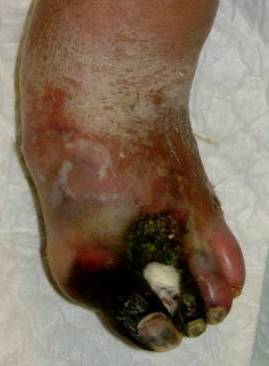Diabetic Foot Ulcers
Diabetic foot ulceration poses a major challenge to health professionals involved in the management of diabetes; a multidisciplinary approach leads to good preventative care and appropriate timely wound care intervention.
Patients with a diabetic foot ulcer need to be assessed holistically and intrinsic and extrinsic risk factors considered. Key patient risk factors include; blood glucose levels, peripheral vascular disease, neuropathy, limited joint mobility, foot deformity, callus, and medication, smoking and visual impairment1.
There are principally two types of ‘at-risk’ foot; neuropathic (90%) and neuroischaemic (10%)1,2,3. The aetiology of the foot ulcer must be determined before treatment plans are put into place. The ulcer should be assessed with regard to severity, location, presence of infection, stage of healing, temperature and odour. Diabetic foot ulcers can be classified; two scales in use are the Wagner Classification and the San Antonio.
The neuropathic foot / ulcer commonly presents with a warm, well-perfused foot with palpable pedal pulses. The foot will not ‘sweat’, is subject to dry skin leading to cracking contributing to excess callus formation and the arch of the foot is commonly raised and the toes may be clawed. Ulceration is commonly found to the sole of the foot underneath neglected callus and high planter pressures.

The neuroischaemic foot / ulcer is cool and pulseless, poorly perfused, the foot can appear deceptively pink and healthy as the capillaries dilate in an attempt to improve the circulation and can appear warm if it is infected. Ulcers are commonly seen on the edge of the foot, the tips of the toes or the areas around the back of the heel. They are usually caused by trauma such as ill fitting footwear.
The diabetic foot ulcer is largely ‘at risk’ of tissue necrosis and severe infection which may result in gangrene. They should be assessed regularly for signs of wound infection, remembering that infected wounds are often minimally symptomatic, displaying only exudate, odour or mild discomfort.
A wound dressing should be selected to support a moist wound environment, prevent further trauma, treat / prevent infection, manage exudate, control odour and protect the peri-wound skin. CliniSorb should be considered if the wound is malodorous and LBF will protect the peri-wound area from excoriation by the exudate.
External pressure can be reduced to the wound with appropriate footwear; bed rest or other ‘offloading’ devices.
References:
- McInnes, A. (2001) Guide to the assessment and management of diabetic foot wounds. Diabetic Foot (Supplement): 4; 1.
- Edmonds, M.E. and Foster, A.V.M. (2000) Managing the Diabetic Foot. Blackwell Science Press.
- Kahn, R. (1999) Consensus Development Conference on Diabetic Foot Wound Care. Diabetes Care: 22; 8.
Caveat: The information given is a guide only and should not replace clinical judgement.
